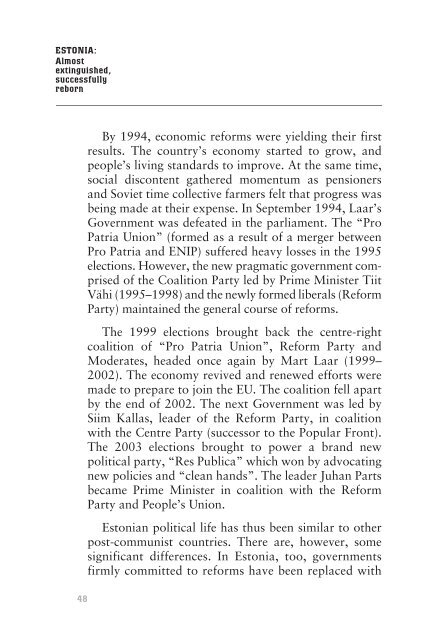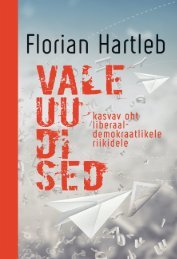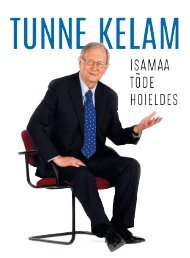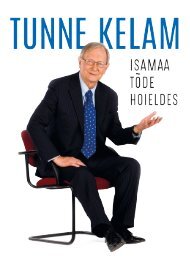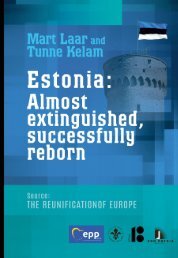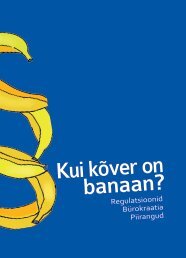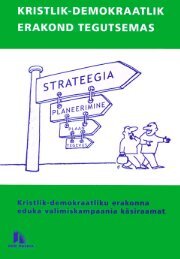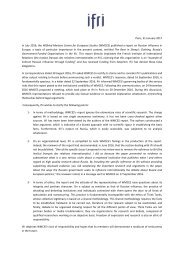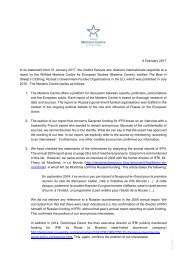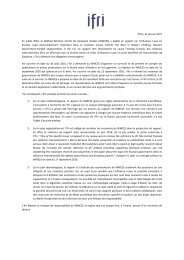Estonia: Almost extinguished, successfully reborn
The following text is the shortest possible review to help inform friends and guests from abroad about Estonia’s experience with foreign occupation and totalitarianism as well as its road to peacefully re-establishing national inde-pendence on the basis of democracy. Tunne Kelam Member of the European Parliament
The following text is the shortest possible review to help inform friends and guests from abroad about Estonia’s experience with foreign occupation and totalitarianism as well as its road to peacefully re-establishing national inde-pendence on the basis of democracy.
Tunne Kelam
Member of the European Parliament
Create successful ePaper yourself
Turn your PDF publications into a flip-book with our unique Google optimized e-Paper software.
ESTONIA:<br />
<strong>Almost</strong><br />
<strong>extinguished</strong>,<br />
<strong>successfully</strong><br />
<strong>reborn</strong><br />
By 1994, economic reforms were yielding their first<br />
results. The country’s economy started to grow, and<br />
people’s living standards to improve. At the same time,<br />
social discontent gathered momentum as pensioners<br />
and Soviet time collective farmers felt that progress was<br />
being made at their expense. In September 1994, Laar’s<br />
Government was defeated in the parliament. The “Pro<br />
Patria Union” (formed as a result of a merger between<br />
Pro Patria and ENIP) suffered heavy losses in the 1995<br />
elections. However, the new pragmatic government comprised<br />
of the Coalition Party led by Prime Minister Tiit<br />
Vähi (1995–1998) and the newly formed liberals (Reform<br />
Party) maintained the general course of reforms.<br />
The 1999 elections brought back the centre-right<br />
coalition of “Pro Patria Union”, Reform Party and<br />
Moderates, headed once again by Mart Laar (1999–<br />
2002). The economy revived and renewed efforts were<br />
made to prepare to join the EU. The coalition fell apart<br />
by the end of 2002. The next Government was led by<br />
Siim Kallas, leader of the Reform Party, in coalition<br />
with the Centre Party (successor to the Popular Front).<br />
The 2003 elections brought to power a brand new<br />
political party, “Res Publica” which won by advocating<br />
new policies and “clean hands”. The leader Juhan Parts<br />
became Prime Minister in coalition with the Reform<br />
Party and People’s Union.<br />
<strong>Estonia</strong>n political life has thus been similar to other<br />
post-communist countries. There are, however, some<br />
significant differences. In <strong>Estonia</strong>, too, governments<br />
firmly committed to reforms have been replaced with<br />
48


